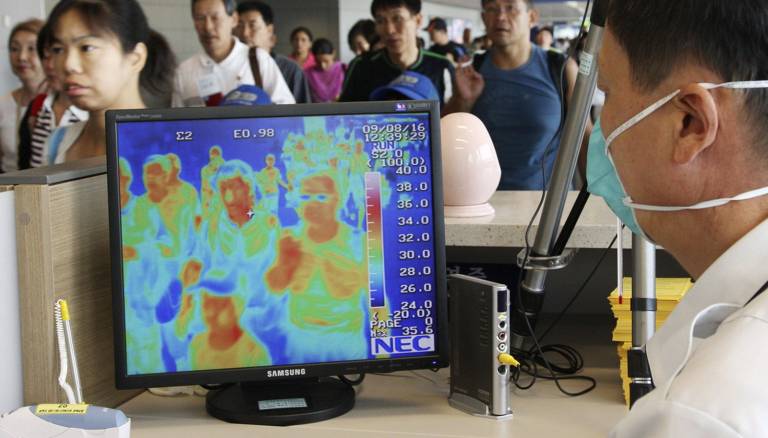 Middle East Respiratory Syndrome Coronavirus (MERS-CoV) has been circulating since at least April 2012. Since then it has been confined largely to the Middle East (with some notable exceptions).
Middle East Respiratory Syndrome Coronavirus (MERS-CoV) has been circulating since at least April 2012. Since then it has been confined largely to the Middle East (with some notable exceptions).
The two weeks have seen the largest outbreak of the disease outside of the region, with at least 41 MERS-CoV cases and 4 deaths in South Korea. This post summarizes what we currently know about the outbreak and the disease more generally.
What is MERS-CoV, how does it spread, and how deadly is it?
MERS-CoV is part of a family of viruses, known as coronaviruses (the common cold and severe acute respiratory syndrome (SARS) are other examples). Diagnosis of MERS is complicated as its symptoms mimic those of other respiratory infections, including fever, cough and shortness of breath.
It is currently unknown precisely how MERS-CoV spreads. There appears to be an animal reservoir, most likely camels, and many cases have been zoonotic (passing from animal to human). Until recently, human-to-human transmission has been unusual, with most people infecting just one other person or none at all, leading to outbreaks that naturally die out quickly.
MERS-Cov appears to have a mortality rate of approximately 30-40%. Those with pre-existing conditions (such as chronic lung, heart or kidney disease, diabetes or cancer) are more likely to die from the disease.
How did the South Korean outbreak start?
The outbreak appears to have begun with a 68 year old businessman who traveled to Saudi Arabia, the United Arab Emirates, Bahrain and Qatar before returning to South Korea. When he arrived in South Korea he was asymptomatic, but about a week later sought medical treatment at three separate hospitals. While infectious, but not symptomatic, he had traveled widely within South Korea, potentially exposing thousands of people to infection.
What makes the South Korean outbreak particularly alarming is that, until now, human-to-human transmission of the disease has been relatively rare and seemingly difficult. Now, a single traveler has apparently sparked an outbreak of over 40 cases, causing scientists to question what has changed.
Researchers have a few hypotheses about why the virus seems more transmissible. The first possibility is that the virus has mutated to become more transmissible. This would be particularly bad news as it would make the virus far harder to contain. The second is that the index patient is a so-called “super-spreader” with an unusually high viral load, thus passing on the disease more readily. In this case the disease might quickly die out as subsequent patients are unlikely to pass on the illness. A third is that cultural practices in South Korea, such as the fact that family members tend to do more nursing of sick patients, may account for some of the increase.
What has South Korea done?
South Korea has instituted mass quarantines and closed more than 700 schools. It has also monitored travelers’ via thermal imaging cameras in airports and other transportation hubs.
What’s Next?
Whether MERS-CoV spreads more widely in South Korea depends on several factors:
- First, if the virus has mutated to be more infectious, then it is likely to become a wider epidemic with high potential for further international spread. If the super-spreader theory or cultural practices are responsible, prospects for containment are better.
- Second, it will depend on South Korea’s ability to identify, quarantine, and otherwise contain the infection. It is fortunate that the outbreak has occurred in a country with a well-functioning health system, highly trained medical personnel and the resources to respond quickly and effectively (the West African Ebola epidemic illustrates what can happen when a disease strikes communities without these advantages).
- Finally, much will depend simply on luck. The disease was sparked by a single asymptomatic traveler. Another unlucky coincidence could just as easily cause the disease to spread even more widely.



